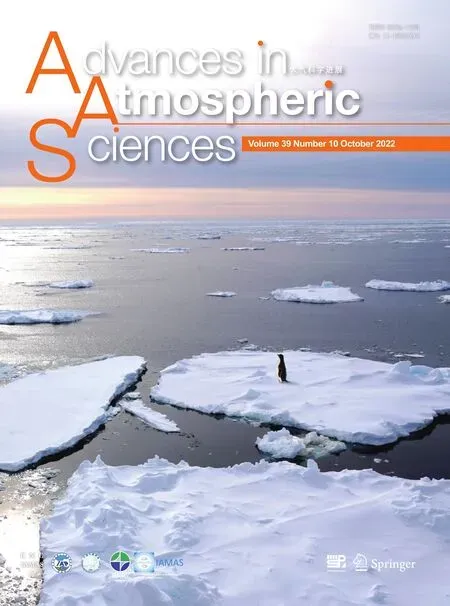Electronic Supplementary Material to:Transport Patterns and Potential Sources of Atmospheric Pollution during the XXIV Olympic Winter Games Period*
Yuting ZHANG, Xiaole PAN, Yu TIAN, Hang LIU, Xueshun CHEN,3, Baozhu GE,3, Zhe WANG,Xiao TANG, Shandong LEI, Weijie YAO, Yuanzhe REN, Yongli TIAN, Jie LI, Pingqing FU,Jinyuan XIN,6, Yele SUN,3, Junji CAO, and Zifa WANG,3
1State Key Laboratory of Atmospheric Boundary Layer Physics and Atmospheric Chemistry,
Institute of Atmospheric Physics, Chinese Academy of Sciences, Beijing 100029, China
2College of Earth and Planetary Sciences, University of Chinese Academy of Sciences, Beijing 100049, China
3Center for Excellence in Regional Atmospheric Environment, Institute of Urban Environment,Chinese Academy of Sciences, Xiamen 361021, China
4Inner Mongolia Autonomous Region environmental monitoring central station, Hohhot 010090, China
5Institute of Surface-Earth System Science, Tianjin University, Tianjin 300072, China
6Collaborative Innovation Center on Forecast and Evaluation of Meteorological Disasters,Nanjing University of Information Science and Technology, Nanjing 210044, China
7Institute of Atmospheric Physics, Chinese Academy of Sciences, Beijing 100029, China

Table S1. The Pearson correlation coefficients between PM2.5 and gaseous pollutants for the ATZX and BBF stations during 2015-21 for the same period of the XXIV Olympic Winter Games.

Fig. S1. 1000 hPa wind field (units: m s-1) and geopotential height field (units: 10-1gpm), the shaded areas represent the temperature differences between 900 hPa and 1000 hPa (units: °C) in February from 2015 to 2021.

Fig. S2. The standard change in total spatial variance (TSV) as clusters are combined during 2015-21.

Table S2. Height distribution of RTA with different backward time steps during 2015-21 (units: %).
 Advances in Atmospheric Sciences2022年10期
Advances in Atmospheric Sciences2022年10期
- Advances in Atmospheric Sciences的其它文章
- An Unprecedented Record Low Antarctic Sea-ice Extent during Austral Summer 2022
- 2021: A Year of Unprecedented Climate Extremes in Eastern Asia,North America, and Europe
- Transport Patterns and Potential Sources of Atmospheric Pollution during the XXIV Olympic Winter Games Period
- Observational Subseasonal Variability of the PM2.5 Concentration in the Beijing-Tianjin-Hebei Area during the January 2021 Sudden Stratospheric Warming
- An Extreme Drought over South China in 2020/21 Concurrent with an Unprecedented Warm Northwest Pacific and La Niña
- How Well Do CMIP6 and CMIP5 Models Simulate the Climatological Seasonal Variations in Ocean Salinity?
